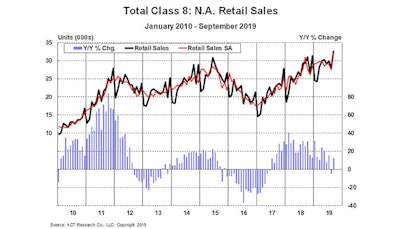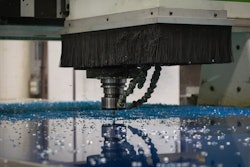Many in the United States’ business community breathed a sigh of relief earlier this month when President Donald Trump announced he would once again postpone the next round of tariff hikes on Chinese imports thanks to significant progress in negotiations between the two nations.
Trump had initially planned to increase Section 301 tariffs on Chinese goods on Oct. 1, 2019 but announced in early September he had postponed that increase until Oct. 15 as a “gesture of goodwill.” The president then postponed indefinitely just days before it was set to take effect, announcing on Twitter “good things are happening at China trade talk meeting. Warmer feelings than in recent past.”
The news was met with positive reaction from Wall Street, where both the Dow Jones Industrial Average and S&P 500 responded from a stagnant first week of the month with a week of solid gains, as well as the greater business community, which remains hopeful the two nations can resolve their dispute before any more rate hikes are required.
Yet despite the short burst of positivity, the long-term sustainability of the U.S. economy remains expectedly unclear as businesses and industries throughout the market struggle to prepare for the future without closure on the trade dispute.
In releasing its most recent North American Commercial Vehicle Outlook report, ACT Research reports as manufacturers and farmers struggling to compete on the tilted global playing field, the key driver of growth into the mid-term outlook is the U.S. consumer, who the company says remains well positioned to keep the economy out of the ditch.
ACT Research’s Outlook report forecasts the future of the commercial vehicle industry for the next one to five years. President and Senior Analyst Kenny Vieth says this month’s report shows economic expectations remained unchanged this month, “with growth expected to moderate in 2019 and again in 2020.”
Vieth says after growing by 2.9 percent last year, ACT is forecasting U.S. gross domestic product (GDP) growth at 2.3 percent for this year and softening to potentially below 2.0 percent in 2020.
U.S. GDP totaled 3.1 percent in the first quarter and 2.1 percent in the second quarter this year, though in the latter period, consumer spending was up by 4.3 percent and carried a business sector that fell by 5.5 percent in same period, reports the Bureau of Economic Analysis.

As it relates to the truck market, ACT Vice President and Senior Analyst Tim Denoyer says forward-looking demand indicators show the market continuing to erode heading into the new year despite incredibly strong delivery totals in 2019.
“Ultimately, the current situation of weak orders and strong build is unsustainable, and downward build plan revisions are happening,” he says, though he also adds, “the worst case scenarios for heavy vehicle demand remain unlikely.”
What happens next is anyone guess. This month’s tariff hike postponement hasn’t been followed with any substantial updates, and the political climate in Washington makes it unlikely any news can be reasonably expected in the coming days or weeks.
Additionally, while the U.S. non-farm workforce expanded for the 108th consecutive month in September, the number of new workers added to nation’s total each month is now consistently below the number required for 2 percent GDP stability — meaning the likelihood consumers can continue to support the economy at its current level could trend down in the long term unless a major uptick in productivity appears.
All of this is to say the trucking industry and general economy isn’t doomed or destined for a fall, but it has started to wobble. And every day that passes without a resolution on the Chinese tariff debate weakens it just a little bit more.










